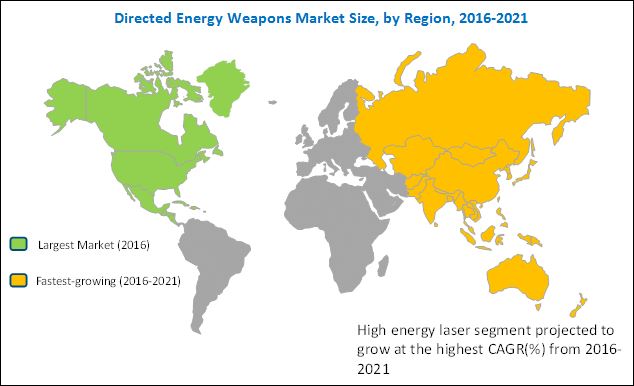The report
"Gesture Recognition & Touchless Sensing Market
by Technology (Touch-based & Touchless), Application (Consumer
Electronics, Automotive, & Others), Product (Biometric &
Sanitary Equipment) & by Geography - Global Forecast to 2020",
The gesture recognition & touchless sensing market is expected to
grow from USD 5.15 Billion in 2014 to USD 23.55 Billion by 2020, at a
CAGR of 28.2% between 2015 and 2020.
Browse 83 market data tables and 75 figures spread through 192 pages and in-depth TOC on “Gesture Recognition & Touchless Sensing Market - Global Forecast to 2020"
Some of the major companies in the gesture
recognition & touchless sensing market include Intel (U.S.),
Microsoft Corp. (U.S.), Cognitec Systems (Germany), GestureTek (U.S.),
CogniVue (Canada), eyeSight (Israel), PointGrab (Israel), SoftKinetic
(Belgium), PrimeSense (Israel), Cross Match Technologies, Inc. (U.S.),
Microchip Technology Inc. (U.S.), Qualcomm Inc. (U.S.) and so on.
The scope of the report covers detailed information
regarding the major factors influencing the growth of the gesture
recognition & touchless sensing market such as drivers, restraints,
challenges, and opportunities. A detailed analysis of the key players
has been done to provide insights into their business overview, products
and services, key strategies, new product launches, mergers &
acquisitions, partnerships, agreements, collaborations, and recent
developments associated with the gesture recognition & touchless
sensing market.
The entire gesture recognition market has witnessed
various advances after the launch of Microsoft Kinect which is meant for
gaming consoles of Xbox 360 launched by Microsoft (U.S.). After the
launch of Kinect, manufacturers and other players from the gesture
control industry value chain started focusing on consumer electronics
for gesture-enabled solutions. Currently, laptops, TVs, smartphones, and
so on with the gesture recognition technology are available in the
market. Similarly, touchless sensing products which primarily consist of
the touchless sanitary equipment and touchless biometrics are gaining
popularity. Currently, looking at the increasing rate of cybercrimes and
illegal trespassing, the biometric authentication market has gained
pace.
Growth in the E-Passport Program acts as a major driver for the market
With the introduction of biometrics and computer
chips, e-passport represents a major trend in the passport applications.
The face detection technology is used in e-passport, where a user’s
face is matched against the image held in the passport database; this
confirms that the person has not applied for a travel document in
another name.
To reduce the threat of identity fraud, governments
of various countries are implementing the e-passport program. The
International Civil Aviation Organization (ICAO), which sets the
principles and rules based on which international flights are conducted,
is also supporting the biometric technology to counter identity fraud.
The compulsory implementation of e-passports for the International Civil
Aviation Organization (ICAO) member countries by 2015 would boost the
market for the biometric technology.
Consumer electronics vertical to play a key role in the gesture recognition market
The application in consumer electronics is likely to
hold a large share and lead the overall gesture recognition market
between 2015 and 2020 owing to the commercialization of the technology
in smartphones, tablets, smart TVs, set-top boxes, and gaming consoles.
There has been an increase in the production of gesture-based
interfaces, which enable users to control devices or software using
natural body movements and gestures. These interfaces are being
incorporated into a wide range of devices, including interactive digital
signs, medical equipment, arcade game machines, and robots among
others.
The application in the automotive sector to grow rapidly during the forecast period
In the automotive sector, gesture recognition is
under pilot testing with efforts concentrated towards integrating the
technology into in-car infotainment accessories. The endeavor would
enable a driver to control air-conditioner, music system, climate
control, and GPS along with other functionalities through gesture
recognition. It is meant to remove a driver’s distraction while changing
various modalities in a car. The technology provides a driver the
facility to operate these modalities simultaneously using simple hand
gestures which are possible with the help of IR and CMOS sensors and
cameras attached to infotainment devices. Infrared sensors are installed
near the gear lever to limit their functionality over a small area and
thus prevent accidental usage by other people in a car.
Automotive majors such as Hyundai (South Korea),
Mercedes Benz (Germany), Toyota (Japan), Honda (Japan), and BMW
(Germany) have come up with concept cars displaying integrated gesture
recognition capabilities.
The Americas expected to hold the largest market share; APAC to grow at the highest rate
The Americas is expected to hold the largest market
share and dominate the gesture recognition & touchless sensing
market between 2015 and 2020. The increasing concerns towards national
security, especially after 9/11 terrorist attacks have significantly
driven the biometrics market in the U.S. The regulatory-driven
activities and initiatives taken by governments in the Americas have
enabled the large market size of the biometrics market in this region in
2012.
APAC is expected to rank first in the gesture
recognition market and third in the touchless sensing market during the
forecast period. The biometrics market in APAC is set to grow due to
technological advancements, increased awareness amongst masses, and
lowered costs. As organizations have become more security-conscious,
biometric solutions are expected to grow in terms of usage and
importance.





